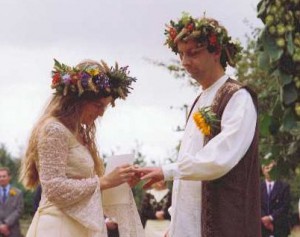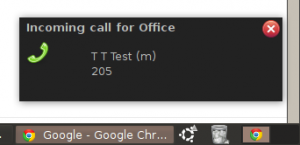Public sector targets have been getting a bad press recently. Speaking about the Mid-Staffordshire hospital scandal, David Cameron told Parliament that the Francis Inquiry blamed
…a focus on finance and figures at the expense of patient care—he says that explicitly—underpinned by a preoccupation with a narrow set of top-down targets pursued, in the case of Mid Staffordshire, to the exclusion of patient safety1
And it’s not just the NHS. In November 2012 five Kent police officers were arrested for allegedly manipulating crime figures2, a practice that research by a former police officer suggests is just one of several ways used by the police to game targets3.
That targets can lead to gaming, distortion and unwanted results is not a new discovery. Target setting dominated Soviet Union economic planning for 60 years and plenty has been written on the way that targets were gamed there4. So why are they still around?
Well firstly because they appear to work. For example, despite the widespread evidence of gaming in the NHS during the New Labour era, there is also evidence that targets did play a part in bringing down waiting times5, and they were certainly implicated in some impressive economic growth in the Soviet Union. But a more compelling reason for at least some form of performance measurement is accountability. Public bodies act on behalf of the public, spending public money to provide services that the public want or need. It is not unreasonable to expect that they should be able to demonstrate that they are doing this in an effective and efficient manner—that their performance should be measured and that they be taken to task if it is not up to par. Is there a better way to achieve this?
The operations of public bodies are complex, with multiple, potentially competing objectives sometimes covering many areas. Trying to sum up performance with a small number of measures requires a degree of aggregation6 which hides detail. It makes by and large flawed assumptions about the ability to judge the whole by looking at a part7, allowing the situation where an organisation both hits its targets and delivers abysmal levels of service. The use of clear, prescriptive methods for measuring lends itself to gaming and manipulation of the figures. The process of audit is wrapped in information asymmetry—the organisation being audited knows far more about its workings than the body doing the auditing. But what if public bodies were expected to work on the basis of completely open books, publishing for public scrutiny as much data about their performance and operations as could be accomplished whilst still respecting issues of data protection?
With all the data out in the public domain aggregation is reduced. It becomes possible to spot differences in performance in different areas of the organisation’s operations. There is less reliance on reporting only small parts of the story. To an extent a reverse information asymmetry is introduced—there is no prior knowledge of who will look at which area of the data when or how, making gaming extremely difficult. Organisations would be incentivised to ensure that all their figures showed good service, not just those they know they will be judged on. Eric Pickles has already said he wants an army of armchair auditors scrutinising local government accounts8, but why stop at finance? The digital era and modern management information systems make this level of transparency possible for the first time. There are examples from around the globe of increased transparency leading to corruption being uncovered by citizens9; it’s time to extend that to poor performance.
Of course, I am not suggesting that all responsibility for performance management be crowd sourced. Monitoring performance, reviewing information, learning from it and improving systems as a result, is the job of managers. But introducing the possibility of scrutiny by citizens or peers can do much to overcome the weaknesses of the current approach. Such change represents not just a major shift in culture towards greater transparency, but a shift in attitude towards how data are used, from the terror of sanctions to a more learning focused culture based on intelligence gathering10. It allows an organisation to concentrate on learning how best to deliver its services, instead of how best to hit it targets. The two are rarely the same thing.
- Hansard (2013). House of Commons. Wednesday 6 Feb 2013 [Online]. Available from: http://www.publications.parliament.uk/pa/cm201213/cmhansrd/cm130206/debtext/130206-0001.htm#13020677000972 [Retrieved 24 April 2013] [↩]
- Laville, S (2012). Kent police officers arrested over crime statistics ‘irregularities’. The Guardian [Online], 15 November. Available from: http://www.guardian.co.uk/uk/2012/nov/15/kent-police-arrested-statistics-irregularities [Retrieved 24 April 2013] [↩]
- Patrick, R (2009). Performance management, gaming and police practice: a study of changing police behaviour in England and Wales during the era of new public management [Online]. PhD thesis, University of Birmingham. Available from: http://etheses.bham.ac.uk/534/ [Retrieved 23 April 2013] [↩]
- Bevan, G and Hood, C (2006). What’s measured is what matters: targets and gaming in the English public health care system. Public Administration, 84 (3): 517–538 [↩]
- Hood, C (2006). Gaming in targetworld: the targets approach to managing British public services. Public Administration Review, 66 (4): 515–521 [↩]
- De Bruijn, H (2006). Managing Performance in the Public Sector. 2nd ed. London: Routledge [↩]
- Bevan, G and Hood, C (2006). What’s measured is what matters: targets and gaming in the English public health care system. Public Administration, 84 (3): 517–538 [↩]
- Department for Communities and Local Government (2010). Eric Pickles ‘shows us the money’ as departmental books are opened to an army of armchair auditors [Online]. Available from: https://www.gov.uk/government/news/eric-pickles-shows-us-the-money-as-departmental-books-are-opened-to-an-army-of-armchair-auditors [Retrieved 19 November 2012] [↩]
- Bertot, JC, Jaeger, PT and Grimes, JM (2010). Using ICTs to create a culture of transparency: E-government and social media as openness and anti-corruption tools for societies. Government Information Quarterly, 27 (3): 264–271 [↩]
- Hood, C (2007). Public service management by numbers: Why does it vary? Where has it come from? What are the gaps and the puzzles? Public Money & Management, 27 (2): 95–102 [↩]



